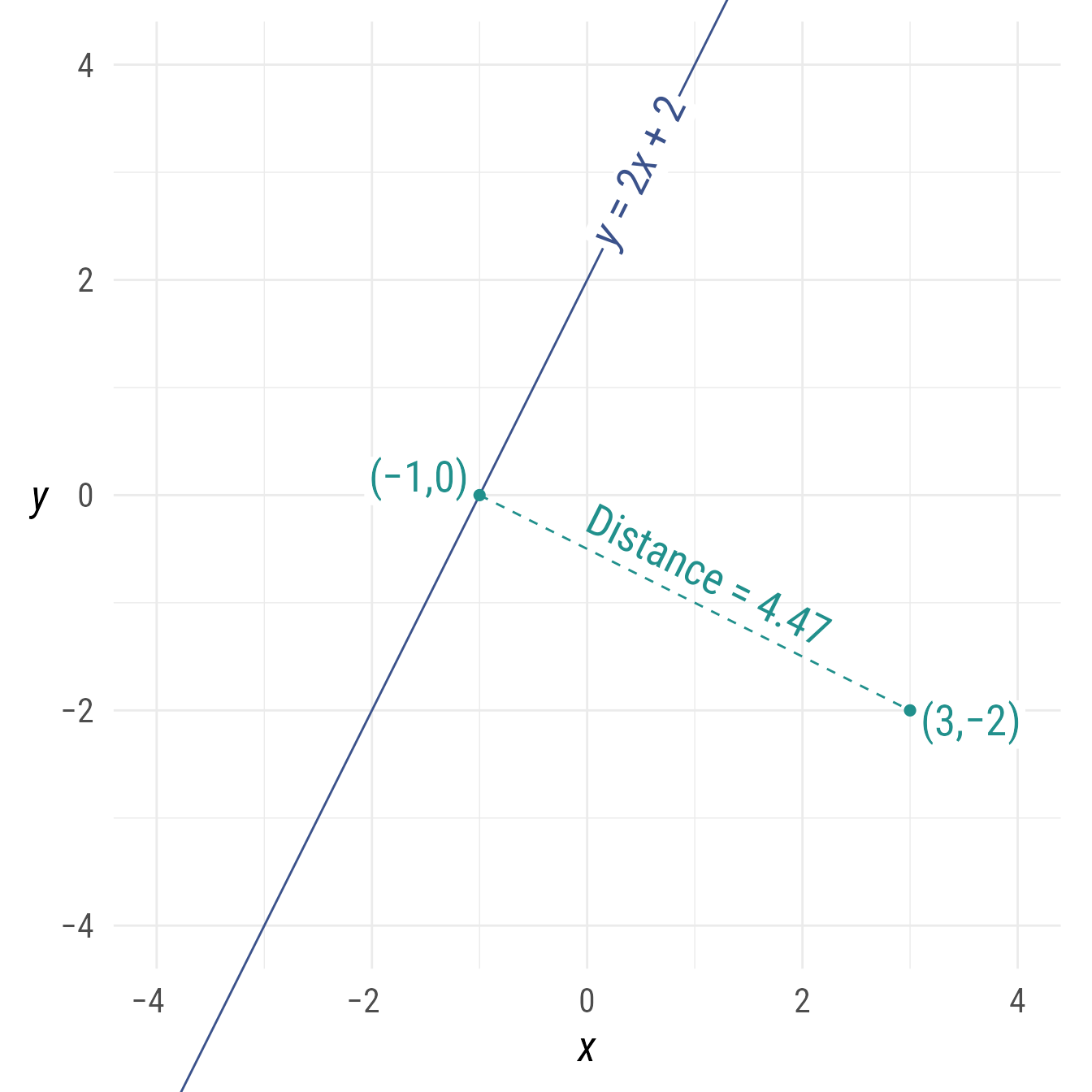Setup
Packages
Base Plot
To avoid repetitive code, we set defaults and make a base plot:
my_font <- "Roboto Condensed"
my_font_size <- 20
my_point_size <- 2
# my_colors <- viridis::viridis(2, begin = .25, end = .5)
my_colors <- c("#3B528B", "#21908C")
theme_set(
theme_minimal(
base_size = my_font_size,
base_family = my_font) +
theme(axis.title.y = element_text(angle = 0, vjust = 0.5)))
bp <- ggdiagram(
font_family = my_font,
font_size = my_font_size,
point_size = my_point_size,
linewidth = .5,
theme_function = theme_minimal,
axis.title.x = element_text(face = "italic"),
axis.title.y = element_text(
face = "italic",
angle = 0,
hjust = .5,
vjust = .5)) +
scale_x_continuous(labels = signs_centered,
limits = c(-4, 4)) +
scale_y_continuous(labels = signs::signs,
limits = c(-4, 4))Making Lines
Lines can be constructed from a slope and an intercept:
l <- ob_line(slope = 2, intercept = 1, color = my_colors[1])
l
#>
#> ── <ob_line>
#> # A tibble: 1 × 7
#> slope intercept xintercept a b c color
#> <dbl> <dbl> <dbl> <dbl> <dbl> <dbl> <chr>
#> 1 2 1 -0.5 -2 1 -1 #3B528BCode
bp +
l +
l@point_at_y(0)@label(l@equation(), angle = l@angle)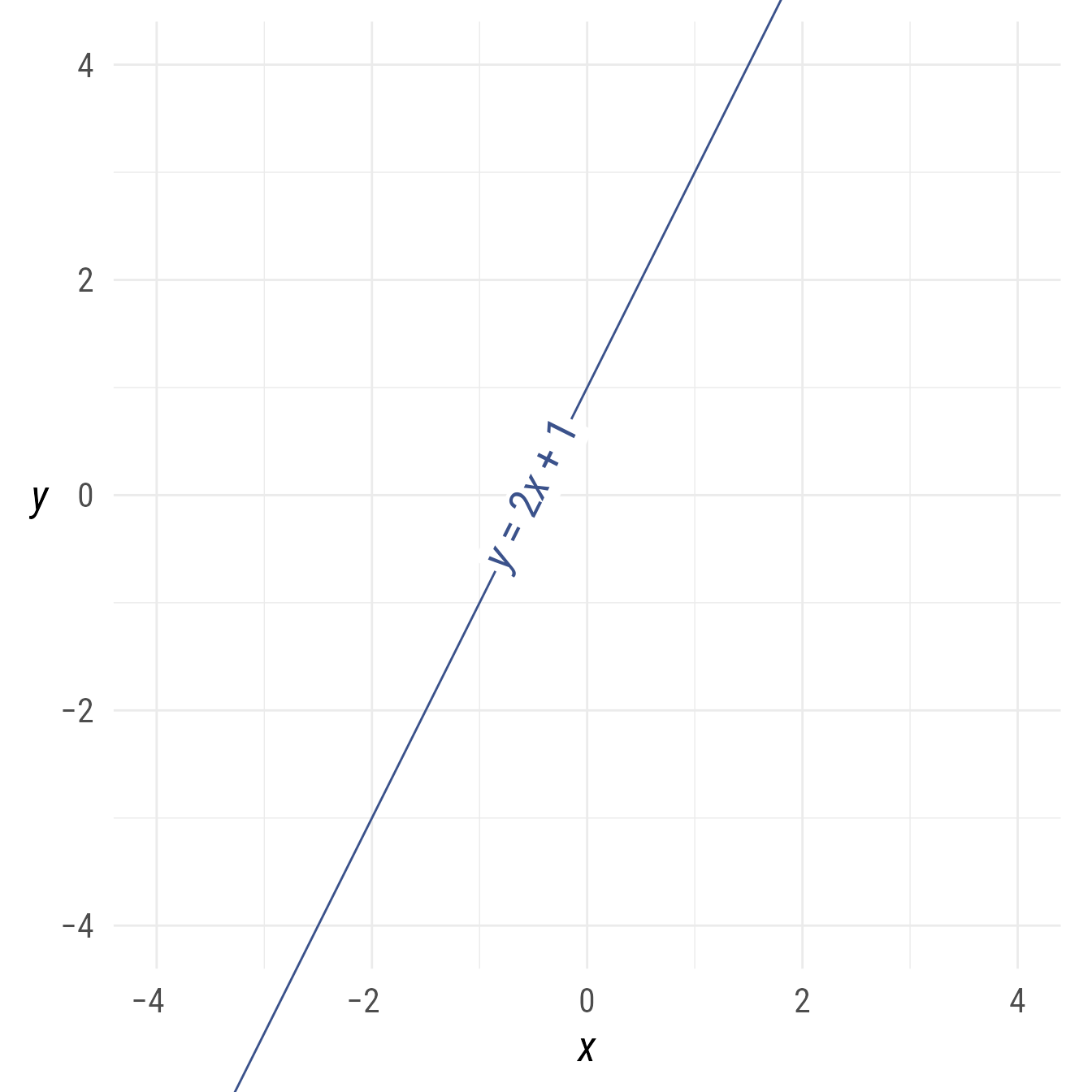
Because the default slope is 0, a horizontal ob_line can be set with just the intercept:
h <- ob_line(intercept = 2, color = my_colors[1])
h
#>
#> ── <ob_line>
#> # A tibble: 1 × 7
#> slope intercept xintercept a b c color
#> <dbl> <dbl> <dbl> <dbl> <dbl> <dbl> <chr>
#> 1 0 2 -Inf 0 1 -2 #3B528BCode
bp +
h +
h@point_at_x(0)@label(equation(h))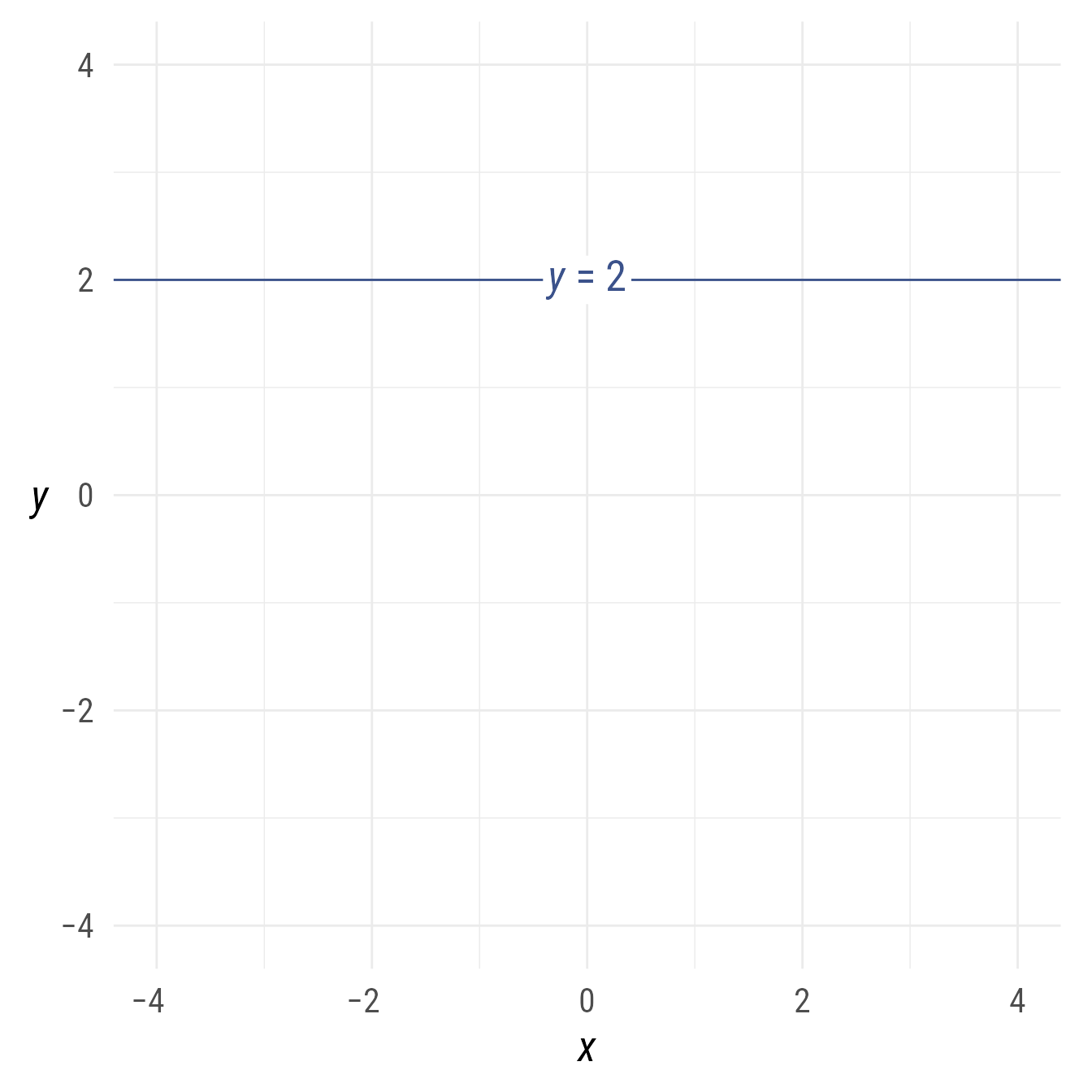
A vertical line can be set with the x-intercept:
v <- ob_line(xintercept = -2, color = my_colors[1])
v
#>
#> ── <ob_line>
#> # A tibble: 1 × 7
#> slope intercept xintercept a b c color
#> <dbl> <dbl> <dbl> <dbl> <dbl> <dbl> <chr>
#> 1 -Inf -Inf -2 1 0 2 #3B528BCode
bp +
v +
v@point_at_y(0)@label(equation(v), angle = v@angle * -1)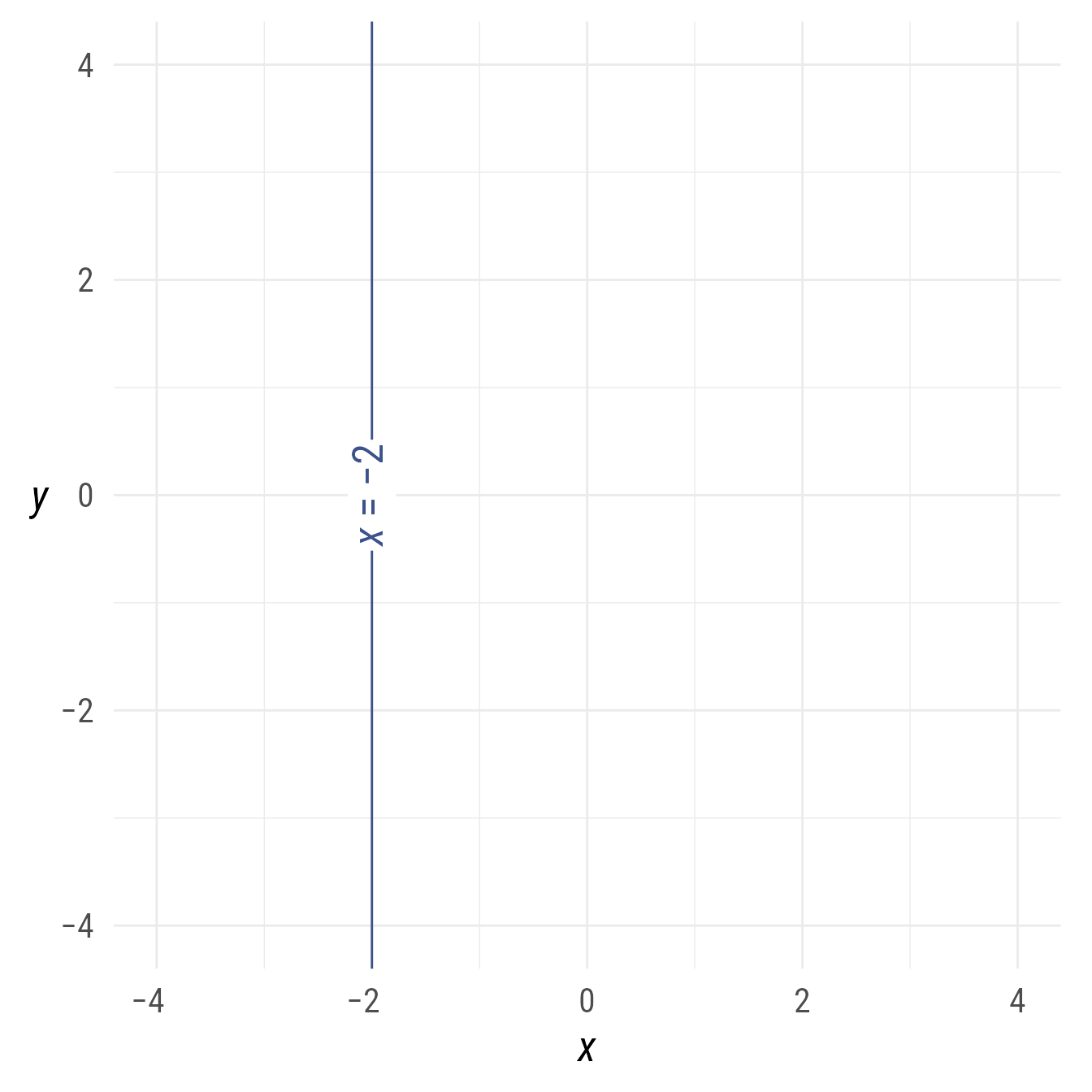
Any line—horizontal, vertical, or sloped—can be constructed from the coefficients of the general form of a line:
l_123 <- ob_line(a = 1, b = 2, c = 3, color = my_colors[1])Code
bp +
l_123 +
l_123@point_at_x(
x = 0)@label(
equation(l_123, type = "general"),
angle = l_123@angle)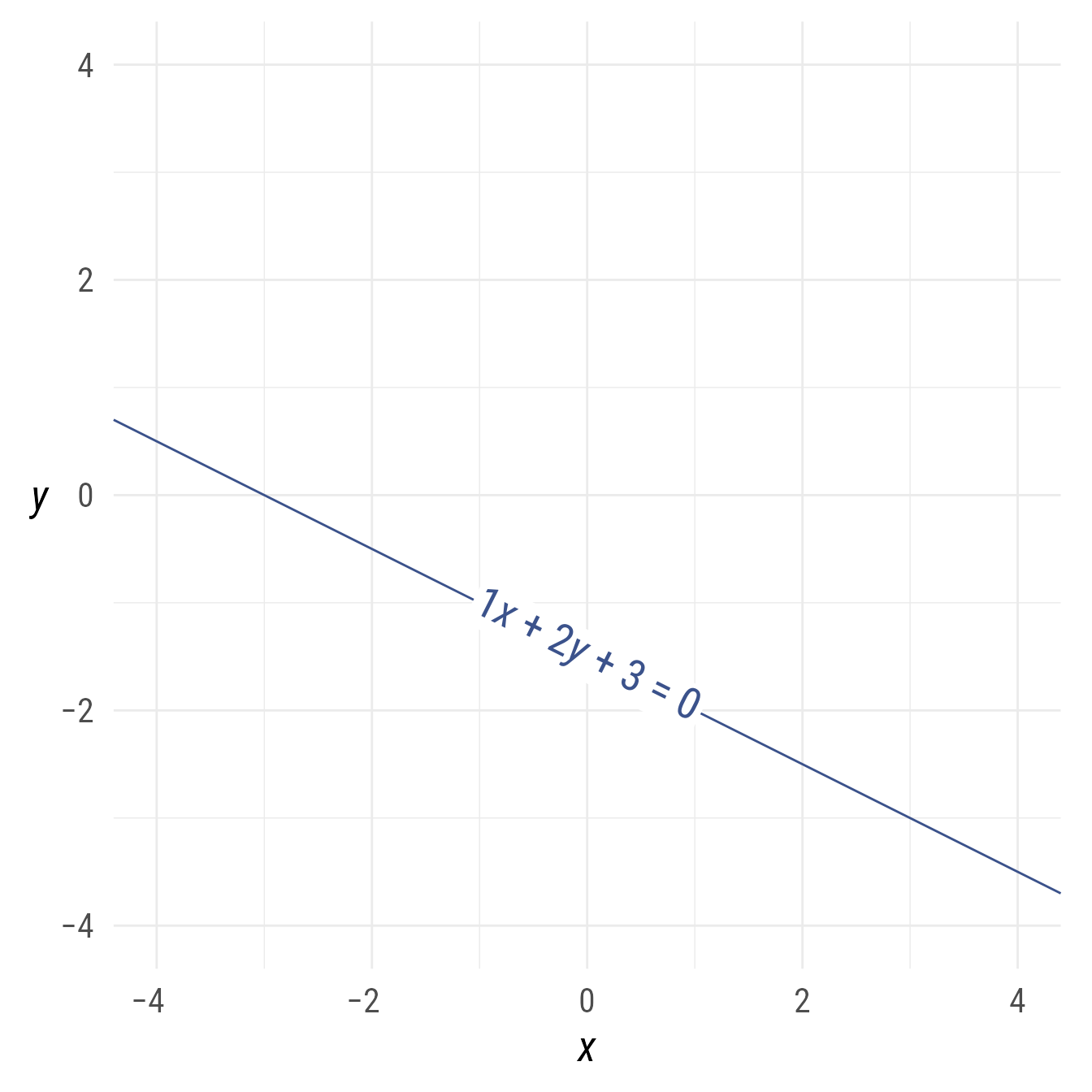
With respect to the general form, the slope is equal to , the y-intercept is equal to , and the x-intercept is equal to
Methods
Projections and Distances
A point can be “projected” onto a line. Imagine shining a light on the point in a direction perpendicular to the line. The point’s shadow on the line would be the shortest distance between the line and the point.
p <- ob_point(3,-2, color = my_colors[2])
l <- ob_line(slope = 2, intercept = 2, color = my_colors[1])
# Point p projected onto line l
p_projected <- projection(p, l)
# Alternately:
l@projection(p)
#>
#> ── <ob_point>
#> # A tibble: 1 × 3
#> x y color
#> <dbl> <dbl> <chr>
#> 1 -1 0 #21908CThe shortest distance from a point to a line can be calculated.
# distance from point p to line l
distance(p, l)
#> [1] 4.472136
# Equivalently:
ob_segment(p, l@projection(p))@distance
#> [1] 4.472136Code
bp +
l +
l@point_at_x(.5)@label(
label = equation(l),
angle = l@angle) +
{s_projected <- ob_segment(
p1 = l@projection(p),
p2 = p,
linetype = "dashed",
label = paste0("Distance = ",
distance(l@projection(p), p) |>
round(digits = 2) |>
as.character()))} +
s_projected@midpoint(c(0, 1))@label(
polar_just = degree(s_projected@line@angle) + c(180, 0),
plot_point = TRUE) 